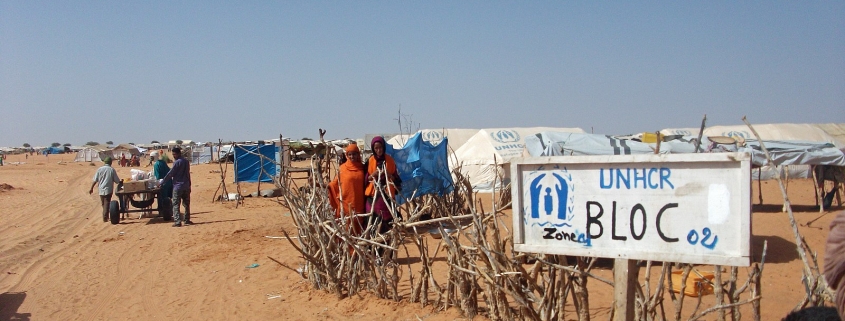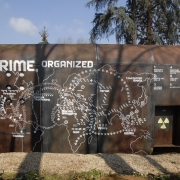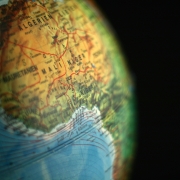Radicalisation and the role of the Islamist militant groups
To date, terrorism has been on the rise around the globe. In the Middle East and North Africa (MENA), the emergence of extremism has caused political instabilities in the region and in some cases, civil wars. Many voices expressed the fear that the radical Islam of the Middle East could have a spillover effect in other parts of the world. In fact, the strong presence of Muslim communities in Sub-Saharan Africa and its proximity to the MENA region puts the sub-continent in immediate danger. The current analysis is focused on the violent trends in Africa and examines the correlation of the internal conflicts in SSA with the extremist.
The rise of terrorism in Sub-Saharan Africa
In recent years, domestic and transnational terrorist groups have plagued Africa. In many cases, these groups targeted the national infrastructure and the destruction of the domestic economy as a way to extort the government’s concessions to their demands. Incidents of terrorist attacks across the world show that foreign investments avoid insecure economies and divert to safer venues. In Africa, the failed states, the natural resources and the rebirth of the Islamic extremism has benefited the expansion of transnational terrorism (Gaibulloev and Sandler).
The Global Peace Index (GPI) showed that for 2015 violence cost the global economy $13.6 trillion, that is 13 per cent of the world GDP (IEP, 2015). Among the most conflicted countries, South Sudan and Somalia can be found in the same group with Syria, Iraq and Afghanistan. Yet, the Middle East and North Africa (MENA) is the most afflicted zone by political turmoil and terrorism. However, fears for global repercussions are already a reality; conflicts are being felt well beyond the MENA region with the number of refugees and displaced people being on the rise. For Sub-Saharan Africa, GPI deteriorated slightly owing to the terrorist threat in the Sahel Belt¹ and West Africa.
The asymmetries found in the SSA societies pave the way for radical Islam. In opposition to African Islam, which follows the moderate and tolerant principles of Sufism, Wahhabi Islam becomes the pole of attraction for many disappointed Muslims; for those who seek an ideal Islamic society that will fight the failures of the current regime including the unemployment, the poverty, the post-colonial corrupt, the social inequalities and the authoritarian governments (Solomon, 2015; quoted in Moulick, 2016). Thus, the aim of the regional Islamist groups, Boko Haram, Al- Shabaab and Ansar al-Dine is to take control of the land where they are based and their integration under the international jihadist groups (Solomon, 2015; quoted in Moulick, 2016).
The rise of Boko Haram in Nigeria
In Nigeria, the Islamist group Boko Haram was initially founded as a peaceful movement. Since 2009, the group has been transformed into a military extremist organisation. By destabilising the government, the ultimate goal for Boko Haram is to create a new state under the Sharia law. Its public support derives from the general dissatisfaction over the corrupted government and authorities.
As the Nigerian group became more radicalised, it developed international linkages with other jihadist groups, such as Al-Qaeda in the Islamic Maghreb² and Al-Shabaab, while expanded its activities and network in the neighbouring countries: Cameroon, Chad and Niger. Adding to the insecurity and violence in the area, armed conflicts with the police and the army are frequent phenomena and led more than 1.5 million people to flee their homes (Sergie and Johnson, 2015).
Over 20,000 square miles are under Boko Haram’s control (Bremmer, 2015). In 2014, the group has taken control over a local town in Borno, Damboa, and caused more than 15,000 displacements. The conflict had a serious economic impact in the oil industry, as Nigeria is the biggest oil-exporter in SSA and holds strong links with the international market.
A strong Al-Shabab in Somalia
Al-Shabab is an Islamist, Somalia-based militant group that targets the Somali-government and the foreign peacekeepers. There are also ties of the group with other Islamist groups such as Boko-Haram and Al-Qaeda of the Islamic Maghreb (AQIM).
In Arabic, its name means “The Youth”. Similarly to Boko-Haram, Al-Shabab strives for the reconstruction of Somalia that will follow the Wahabi tradition. While still holding under control rural areas in South and Central Somalia, the group has lost its domination in Mogadishu and Kismayo. External attacks have also disrupted the neighbouring countries. As a result, Kenya, the most affected by Al-Shabab in line with Burundi, Ethiopia, Uganda, Djibouti and Sierra Leone have sent troops to Somali territory under the African Union Mission in Somalia (AMISOM). According to the UN, the number of the internally displaced persons has reached the 45,000 so far (European Commission).
The Malian Ansar al-Dine
Ansar al-Dine (AAD) is another Islamist militant organisation. Based in Mali, the group is linked with Al-Qaeda in the Maghreb (AQIM) and Boko Haram. In Arabic, its full name is Harakat Ansar al-Dine, which means “movement of defenders of the faith” (BBC, 2013a). Created in 2011, al-Dine fights the Malian and French forces in the area (US Department of State, 2013).
Following the rebellion of Tuaregs on March 2012, the group took control of northern Mali and implemented Sharia law, but was ousted by the French forces in 2013. In an attempt to secure the north from the radicals, UN peacekeeping operations (MINUSMA) began in April 2013. On June 2015 and after years of fighting, the war ended and the two conflicted parties reached an agreement with the government.
The Malian civil war has forced nearly 500,000 locals to abandon their homes (Micallef, 2016). According to BBC, the UN Mission to Mali (MINUSMA) is considered as the most dangerous operation on record with 53 dead peacekeepers so far (BBC, 2015b).
However, the militant group continues the attacks against UN forces. Neighbouring countries like Burkina Faso and Ivory Coast have expressed their fears over the tension in the area and as a result enhanced their security operation on their borders with Mali (Oladipo, 2015b). The victory against the jihadist groups in Mali is related to its geostrategic position between North Africa and the rest of the continent. Its proximity to Europe sets a great concern for a spillover of extremism to the rest of the world (BBC, 2015b).
What’s next?
After this analysis, it is obvious that the three Islamist groups share some common features. First, their ideology is based on Wahhabism, a stricter Islamic tradition, which is opposite to the moderate movement of Sufism followed in Africa. Second, these movements seek to replace the existing authorities with a God-centered government. Third, despite their strong ties with international jihadist groups, they are more committed to local issues rather than the establishment of a global Caliphate (Oladipo, 2015a). Based on this consideration, it was developed the ideology of Pan-Africanism and Pan-Arabism, two distinct ideologies that divided North Africa from the rest of the continent.
On the other hand, the US Department of State expressed the concern that the Islamic State of Iraq and the Levant (ISIL) seeks to expand its network in sub-Saharan African compared to AQIM (Thomas-Greenfield, 2016). The three main Sub-Saharan African groups – Al-Shabab, Ansar Al-Dine and Boko Haram – are unified under Al-Qaeda’s umbrella. Yet, the death of Osama Bin Laden has weakened Al-Qaeda and its appeal in the global jihadist circles.
Consequently, the Somali militant group, Al-Shabaab is trying to keep the ISIL out of East Africa. In the meanwhile, members of Book Haram, based in Nigeria, have pledged their loyalty to ISIL, which helps the latter to infiltrate in West Africa. Also, the former leader of Al-Shabab, Sheikh Abdulqadir Mumi, has recently announced his support to ISIL, which paves the way for more Al-Shabab members to follow and could reinforce the presence of ISIL in East Africa.
Photo: Magharebia, Civilians caught between Mali terrorists, troops(2013). Source: (Wikimedia) | (CC BY 2.0)
Footnotes
[1] Sahel Belt:
The region of Sahel covers the western and north-central Africa, which extends from Senegal to Sudan. It includes Senegal, Mauritania, Mali, Burkina Faso, Niger, Nigeria, Chad and Sudan (Encyclopaedia Britannica, 2016b).
[2] Maghreb:
Maghreb or Maghrib is the region of North Africa, which includes the following countries: Morocco, Algeria, Tunisia and Libya (Encyclopaedia Britannica, 2016a).
Bibliography
Barna J. and Michalko J, (2014) Insecurity in context: The rise of Boko Haram in Nigeria, European Parliament, Directorate-General for External Policies of the Union, Available at: http://www.europarl.europa.eu/RegData/etudes/note/join/2014/536393/EXPO-AFET_NT(2014)536393_EN.pdf (Accessed 20th June 2016)
BBC (2013a) Mali crisis: Key players, BBC News, 12th March, Available at: http://www.bbc.co.uk/news/world-africa-17582909 (Accessed 3rd July 2016)
BBC (2013b) Mali’s Ansar Dine militants blacklisted by US, BBC News, 22nd March, Available at: http://www.bbc.co.uk/news/world-africa-21894117 (Accessed 3rd July 2016)
BBC (2015a) Who are Somalia’s al Shabab, BBC News, 3rd April, Available at: http://www.bbc.co.uk/news/world-africa-15336689 (Accessed 2nd July 2016)
BBC (2015b) World’s most dangerous peacekeeping mission, BBC News, 20th November, Available at: http://www.bbc.co.uk/news/world-africa-34812600 (Accessed 3rd July 2016)
BBC (2016) Mali jihadist mortar attack kills five UN peacekeepers, BBC News, 13th February, Available at: http://www.bbc.co.uk/news/world-africa-35560361 (Accessed 2nd July 2016)
Bentahar Z. (2011) Continental Drift: The Disjunction of North and Sub-Saharan Africa, Research in African Literatures, 42(1): 1-13, Available at: http://www.jstor.org (Accessed 19th June 2016)
Bremmer I. (2015) 5 Facts That Explain the Threat from Nigeria’s Boko Haram, Time.com, 14th January, Available at: https://www.ebscohost.com (Accessed 19th June 2016)
Encyclopaedia Britannica (2016a) Maghrib: Region, North Africa, Available at: https://www.britannica.com/place/Maghrib (Accessed 19th June 2016)
Encyclopaedia Britannica (2016b) Sahel: Region, North Africa, Available at: https://www.britannica.com/place/Sahel (Accessed 8th July 2016)
European Commission, Somalia: Thousands more displaced, Humanitarian Aid and Civil Protection, Available at: http://ec.europa.eu/echo/field-blogs/photos/somalia-thousands-more-displaced_en (Accessed 3rd July 2016)
Gaibulloev K. (2011) The adverse effect of transnational and domestic terrorism on growth in Africa, Journal of Peace Research, 48(3): 355-371, Available at: http://jpr.sagepub.com (Accessed 19th June 2016)
IEP (2016) Global Peace Index, Institute for Economics & Peace, Available at: http://static.visionofhumanity.org/sites/default/files/GPI%202016%20Report_2.pdf (Accessed 4th July 2016)
IISS (2016) Chapter 9: Sub-Saharan Africa, The military Balance 2016, 2016 (February): 421-480, Available at: http://www.iiss.org/en/publications/military%20balance/issues/the-military-balance-2016-d6c9/mb2016-09-sub-saharan-africa-b248 (Accessed 19th June 2016)
Jones S. (2016) Conflict and terrorism cost the world trillions, says peace index, The Guardian, 8th June, Available at: https://www.theguardian.com/global-development/2016/jun/08/conflict-and-terrorism-cost-the-world-trillions-says-global-peace-index (Accessed 20th June 2016)
Masters J. and Sergie A. M. (2015) Al-Shabab, Council on Foreign Relations, Available at: http://www.cfr.org/somalia/al-shabab/p18650 (Accessed 2nd July 2016)
Micallef V. J. (2016) The Malian Manuscripts: A Priceless Islamic Heritage, The Huffington Post, 20th February, Available at: http://www.huffingtonpost.com/joseph-v-micallef/the-malian-manuscripts-a_b_8128648.html (Accessed 2nd July 2016)
Moulick S. (2016) Hussein Solomon, Terrorism and Counter-terrorism in Africa: Fighting Insurgency from Al Shabaab, Ansar Dine and Boko Haram, Book Reviews, Insight on Africa, 8(1): 72-80, Available at: http://ioa.sagepub.com(Accessed 20th June 2016)
Oladipo T. (2015a) Al-Shabab wants IS to back off in East Africa, BBC News, 24th November, Available at: http://www.bbc.co.uk/news/world-africa-34868114 (Accessed 3rd July 2016)
Oladipo T. (2015b) Mali attack: Why the country is an insurgent hotspot, BBC News, 20th November, Available at: http://www.bbc.co.uk/news/world-africa-34882931 (Accessed 2nd July 2016)
Pring C. (2015) People and Corruption: Africa Survey 2015, Global Corruption Barometer, Transparency International and AfroBarometer, Available at: http://files.transparency.org/content/download/1941/12775/file/2015_GCB_SubSaharanAfrica_EN.pdf (Accessed 1st July 2016)
Puddington A. and Roylance T. (2016) Anxious Dictators, Wavering Democracies: Global Freedom under Pressure, Freedom in the World 2016, Freedom House, Available at: https://freedomhouse.org/sites/default/files/FH_FITW_Report_2016.pdf (Accessed 27th June 2016)
Sergie A. M. and Johnson T. (2015) Boko Haram, Council on Foreign Relations, 5th March, Available at: http://www.cfr.org/nigeria/boko-haram/p25739 (Accessed 3rd July 2016)
Thomas-Greenfield L. (2016) Addressing Instability in Sub-Saharan Africa, Testimony, U.S. Department of State, 10th May, Washington DC, Available at: http://www.state.gov/p/af/rls/rm/2016/257081.htm (Accessed 2nd July 2016)
UNHCR, Africa, UN Refugee Agency, Available at: http://www.unhcr.org/uk/africa.html (Accessed 19th June 2016)
United Nations (2015) The Millennium Development Goals Report, Regional Backgrounder: Sub-Saharan Africa, DPI/2594/5 E, UN Department of Public Information, Available at: http://www.un.org/millenniumgoals/2015_MDG_Report/pdf/backgrounders/MDG%202015%20PR%20Bg%20SSA.pdf (Accessed 19th June 2016)
United Nations (2016) UN Peacekeeping Brochure, Available at: http://www.un.org/en/peacekeeping (Accessed 1st July 2016)
United Nations Peacekeeping (2016) Peacekeeping Fact Sheet, 30th April, Available at: http://www.un.org/en/peacekeeping/resources/statistics/factsheet.shtml (Accessed 1st July 2016)
United Nations Peacekeeping, Peace and Security, Available at: http://www.un.org/en/peacekeeping/operations/peace.shtml (Accessed 1st July 2016)
US Department of State (2013) Terrorist Designations of Ansar al-Dine, Office of the Spokesperson, 21st March, Available at: http://www.state.gov/r/pa/prs/ps/2013/03/206493.htm (Accessed 3rd July 2016)
US National Counterterrorism Center, Al-Shabaab, Available at: https://www.nctc.gov/site/groups/al_shabaab.html (Accessed 3rd July 2016)
Walker D. (2005) Islam, the Arab West and Sub-Saharan Africa, 1935-1980, Islamic Studies, 44(1): 53-75, Available at: http://www.jstor.org (Accessed 19th June 2016)







Leave a Reply
Want to join the discussion?Feel free to contribute!